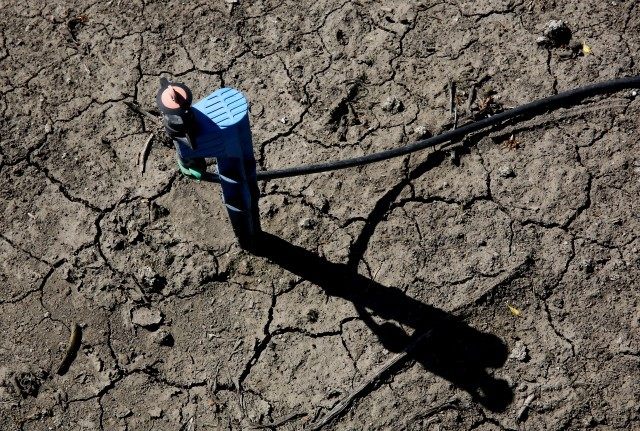With Lake Mead at record lows, Arizona is preparing to implement water rationing plans that have been in place in since the 1990s — the largest cuts will impact farming in the state.
According to Slate magazine, Lake Mead was at 1,080 feet above sea level last week, which marks the first time the lake has been that low “since the construction of the Hoover Dam in the 1930s.”
Once the largest water reservoir in the country, Lake Mead is expected to hit a new record low of 1,073 feet above sea level in June. If the water remains at 1,075 feet or lower on January 1, 2016, “the U.S. Bureau of Reclamation, which manages the [Colorado] river, will declare an official shortage for the first time ever—setting into motion a series of already agreed upon cuts in water outlays.”
And although the West’s current drought centers on California, Bureau of Reclamation cuts will center on Arizona.
Farmers who rely heavily on Central Arizona Project (CAP) water will see significant cuts in water resources.
The Arizona Daily Star explains that CAP is an “aqueduct [system that] brings about 1.5 million acre-feet of Colorado River water per year to Pima, Pinal and Maricopa counties,” in Arizona. “70 percent” of this water goes to agriculture. If the cuts go into effect, some farmers will see a “60 percent” reduction in the amount CAP water available to them.
CAP is already trying to get out in front of the drought by providing “incentives” for farmers to cut their water use now, and perhaps stave off implementation of the pending cuts. If this is not successful and a call is placed on Colorado river water, farmers could be in for a shock.
According to Joe Sigg, Arizona Farm Bureau director of government relations, a call on river water “will be a complete change in a farmer’s business model.”
Arizona farmers have been implementing conservation practices over the past 4 decades that have been contributing to lower numbers in the amount of water used annually in the state. For example, the Arizona Department of Water Resources reports “the state used 4.7 million acre-feet of water in 2013 versus 7.2 million acre-feet in 1957.”
Follow AWR Hawkins on Twitter: @AWRHawkins. Reach him directly at awrhawkins@breitbart.com.

COMMENTS
Please let us know if you're having issues with commenting.